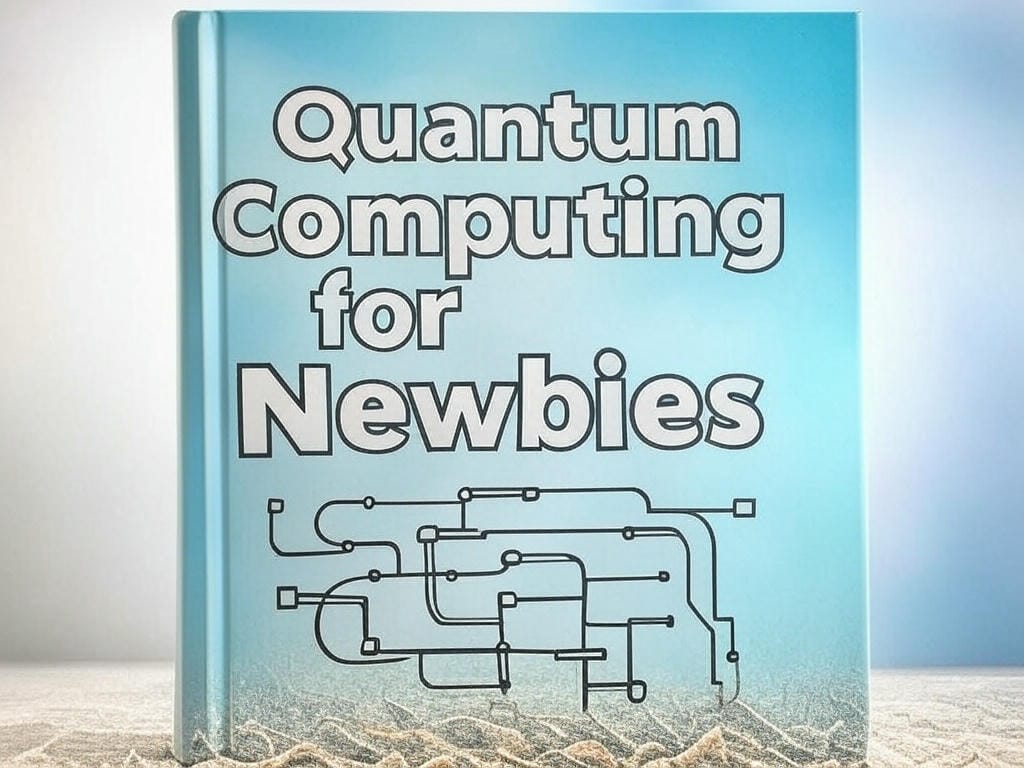Quantum Computing for Newbies: Me Trying to Wrap My Head Around the Cosmic Crazy
An unfiltered intense dive into quantum computing breaking down its cosmic complexities for beginners with humor and wonder.

Picture this: I'm more than 25 years deep in tech, back when the internet sounded like a dying fax machine and "cutting-edge" meant a flip phone. I thought I'd seen it all, but lately, I've been losing sleep over quantum computing. Microsoft's topological qubit thing lit a fire under me, and I figured it was time to break this down for anyone else who's curious but doesn't live in a lab. Fair warning: I'm no physicist, just a computational linguist trying to make sense of the universe's weirdest trick. Let's dive in.
Here's the deal with regular computers (like the one I'm typing on now). They run on bits, these little yes-or-no switches: 0 or 1. Simple, dependable, like flipping a coin that always lands heads or tails. Quantum computing? It's like tossing that coin and letting it hover mid-air, being heads, tails, and everything in between all at once. That's superposition: the magic trick behind qubits, the quantum version of bits. Then there's entanglement, where two qubits get so tight they're like twins who feel each other's pain, no matter how far apart. Spooky? You bet. Useful? Oh, yeah.
I used to roll my eyes at this stuff; it sounded like Star Trek gibberish. But then I started hearing what it could do. Problems that'd take my laptop longer than the sun's got left to burn? A quantum computer could knock them out before I finish my tea. Microsoft's latest chip (something about Majorana zero modes, which I'll butcher if I try explaining) boosted stability by 10,000x. That's real. We're talking cracking codes, designing drugs, and maybe even sorting out messes we've been kicking down the road. It's the kind of potential that makes me sit up and pay attention.
But here's where I get that little knot in my stomach. Quantum mechanics (the brains behind this) isn't just fancy math; it's downright bizarre. Particles popping up in two places at once, or acting like they've got a secret hotline across the galaxy? I was venting to a friend who's in the quantum game, and he hit me with: "The equations are gorgeous, but it's like we're poking at shadows." Even Feynman, one of the big shots, threw up his hands and said, "Nobody understands this stuff." Makes me feel better about my head-scratching.
So how does it even work? Imagine a box colder than a winter I'd never survive (near absolute zero), stuffed with qubits made from weird stuff like superconductors or trapped ions. They're fussy as hell, prone to collapsing if you look at them wrong. Microsoft's trick is wrapping them in this topological armor so they hold it together. Give them a puzzle (like finding a needle in a haystack the size of Texas) and they don't poke around one blade at a time; they scan the whole damn thing at once, thanks to superposition and entanglement. It's less "computing" and more "universe whispering the answer."
I'm torn about where this is headed. On one hand, I'm dreaming of a world where we cure the incurable, green up our act, and maybe outsmart the chaos I see on my newsfeed. On the other hand, I'm jittery, because if this thing cracks encryption, my shaky passwords are toast. And who's holding the keys? Big tech, governments, sure, but the rest of us? Satya Nadella's line from that Microsoft reveal ("forces we cannot fully understand") keeps bouncing around my skull. It's not just a cool quote; it's a nudge to think hard about what we're unleashing. I've watched tech sprint past us before (social media, anyone?), and I'd love for us to get this one right from the jump.
If you're intrigued, don't sweat it: you don't need a degree to dip your toes in. Poke around online, maybe snag something like Quantum Computing for Dummies (it's on my nightstand too). Me? I'm still piecing it together, one late-night ramble at a time. The universe just handed us a wild card, and I'm equal parts thrilled and terrified to see how we play it. What about you? Are you ready to peek at this quantum rabbit hole?
Stay Raw | Stay Real | Stay Intense.
